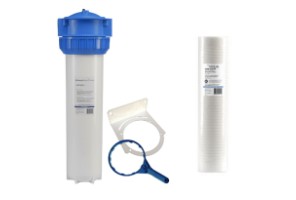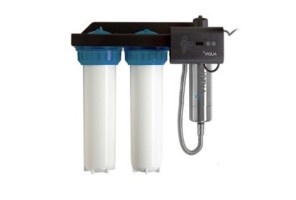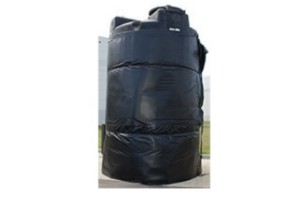Effective Water Treatment
Treating water effectively during emergencies is essential for avoiding waterborne diseases. There are several methods to ensure the safety of your water, several of which can be used in conjunction with one another:
1. Boiling:
Bringing water to a rolling boil for at least one minute (or up to three minutes at higher altitudes) can kill most pathogens. Let the water cool before using it.
Be sure to boil contaminated tap water even if it is filtered, as a filter won’t be able to completely sanitize contaminated water.
2. Disinfection via Bleach:
Chlorine bleach in small doses can be used to disinfect water. Use unscented bleach and add about ¼ tablespoon per gallon of water, then let it stand for 30 minutes before use. Bleach is good at disinfecting water, though it’s important to make sure the ratio of bleach to water is accurate to ensure safety when drinking. It’s important to note that if the water has been infected with certain harmful chemicals or radioactive material, disinfecting alone will not make the water drinkable. If possible, boil the water as well.
3. Filtration:
Water filters with fine mesh can remove sediments, bacteria, parasites and with carbon filtration, taste and odor can we controlled. However, they might not be effective against viruses or harmful chemicals, so it’s best to combine filtration with other treatment method such as adding a disinfectant (iodine, chlorine, or chlorine dioxide) to the filtered water to kill any viruses and bacteria.


4. Water Purification Tablets:
These tablets often contain chemicals like chlorine, iodine, or chlorine dioxide that can kill pathogens. Follow the instructions closely on the packaging to ensure the removal of as many pathogens as possible.
Iodine, tablets with iodine (tetraglycine hydroperiodide), or chlorine tablets kill most germs, but not Cryptosporidium. Water that has been disinfected with iodine is NOT recommended for pregnant women, people with thyroid problems, or those with known hypersensitivity to iodine. It’s also not recommended for continuous use—don’t use it for more than a few weeks at a time.
5. UV Treatment:
Devices like the Viqua treatment systems use ultraviolet (UV) light to disinfect water by disrupting the DNA of microorganisms. They are highly effective because unlike the chemical process iodine or bleach, UV disinfection is a physical process. You can rest assured that there are no possibilities of mismeasurement in chemical effects, and that all pathogens will be safely rendered inert with this technology. The only downside with this method is that it does require a source power source, which means in an emergency scenario in which the power is has been cut, you’ll need to rely on batteries or generators to completely clean your water.
If the water is cloudy, first filter it though a sediment filter OR allow it to settle. Then, draw off the clear water and disinfect it using the UV light. If the water is too cloudy, the UV light may not be able to penetrate small particles in the water to kill all of the germs.


Water Storage Essentials
During an emergency situation, storing water safely will be just as important as the initial collection and disinfection of the water. Your drinking water can easily become infected if it is not stored properly. In maintaining your water storage solutions, the CDC recommends:
- Label container as “drinking water” and include storage date.
- Replace water every six months.
- Keep containers in a place with a cool temperature (50°F –70°F).
- If storing water during freezing conditions, try to insulate your water storage system with thermal solutions or blankets.


- Keep containers away from direct sunlight, as sunlight could facilitate the growth of microbial bacteria.
- Keep containers away from areas where toxic substances, such as gasoline or pesticides, are present.
- If your water storage solution uses electrical devices at any stage, turn off the power units from your circuit box, and protect the control panels, keeping them safe from the elements.


It’s important to remember that even if you think you’ve stored enough water to outlast an emergency situation, you’ll want to limit your water usage as much as possible. You never know just how valuable your stores will be, or how long you’ll need them to last.
Try to use minimal amounts of clean water when bathing, washing laundry or dishes, grooming, or using the restroom. If plumbing water from a personal tank, be sure not to leave water running when committing any of these household tasks.
When using any of your clean water, try to avoid touching any of the stored water in its container with your hands. Doing so could contaminate your stored water with bacteria. If your water storage units don’t have a spout for easy pouring, use a scoop that can be easily cleaned to take the water from its container.












